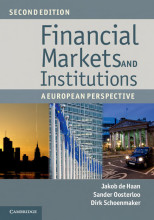Main Idea Liability
9 important questions on Main Idea Liability
EC, Proposal for a Directive on Adapting Non-Contractual Civil Liability Rules to Artificial Intelligence, Article 1
Defines common rules for the disclosure of evidence on high-risk AI systems in the context of non-contractual fault-based civil law claims for damages.
Addresses the burden of proof in such claims brought before national courts.
Applicability is limited to non-contractual fault-based civil law claims for damages where the damage occurs after a specified transposition period.
Excludes criminal liability and specifies exceptions related to Union law, Directive 85/374/EEC, the Digital Services Act, and national rules on liability.
EC, Proposal for a Directive on Adapting Non-Contractual Civil Liability Rules to Artificial Intelligence, Article 2
Provides definitions for key terms, including 'AI system,' 'high-risk AI system,' 'provider,' 'user,' 'claim for damages,' 'claimant,' 'potential claimant,' 'defendant,' and 'duty of care.'
EC, Proposal for a Directive on Adapting Non-Contractual Civil Liability Rules to Artificial Intelligence, Article 3
Empowers national courts to order disclosure of evidence about a high-risk AI system suspected of causing damage. Sets conditions for such disclosure, including the claimant's attempts to gather evidence from the defendant. Allows national courts to order specific measures to preserve evidence. Requires proportionality in disclosure and preservation, considering the legitimate interests of all parties. Establishes a rebuttable presumption of non-compliance if a defendant fails to comply with an evidence disclosure order.
- Higher grades + faster learning
- Never study anything twice
- 100% sure, 100% understanding
EC, Proposal for a Directive on Adapting Non-Contractual Civil Liability Rules to Artificial Intelligence, Article 4
Introduces presumptions regarding the causal link between the defendant's fault and the AI system's output causing damage. Specifies conditions for applying these presumptions, especially in the case of providers and users of high-risk AI systems. Allows defendants to rebut these presumptions under certain circumstances.
EC, Proposal for a Directive on Adapting Non-Contractual Civil Liability Rules to Artificial Intelligence, Article 5
Mandates a review by the Commission after five years to assess the application and impact of the Directive. The review includes an examination of the effects of Articles 3 and 4 on achieving the Directive's objectives. Emphasizes the need for evaluating the appropriateness of no-fault liability rules and the necessity for insurance coverage.
EC, Proposal for a Directive on Adapting Non-Contractual Civil Liability Rules to Artificial Intelligence, Article 6
Adds a reference to the new Directive on adapting non-contractual civil liability rules to AI in Annex I to Directive (EU) 2020/1828.
EC, Proposal for a Directive on Adapting Non-Contractual Civil Liability Rules to Artificial Intelligence, Article 7
Requires Member States to adopt laws, regulations, and administrative provisions necessary to comply with the Directive within two years. Mandates the communication of these provisions to the Commission.
EC, Proposal for a Directive on Adapting Non-Contractual Civil Liability Rules to Artificial Intelligence, Article 8
Specifies that the Directive will enter into force on the twentieth day following its publication in the Official Journal of the European Union.
EC, Proposal for a Directive on Adapting Non-Contractual Civil Liability Rules to Artificial Intelligence, Article 9
Addressees
Indicates that the Directive is addressed to the Member States. This Directive seems to establish a framework for addressing liability and compensation issues arising from the use of AI systems, with a focus on high-risk AI systems. It outlines procedures for evidence disclosure, establishes presumptions related to fault and causal links, and mandates a review to assess the effectiveness and impact of the Directive after a specified period.
The question on the page originate from the summary of the following study material:
- A unique study and practice tool
- Never study anything twice again
- Get the grades you hope for
- 100% sure, 100% understanding































